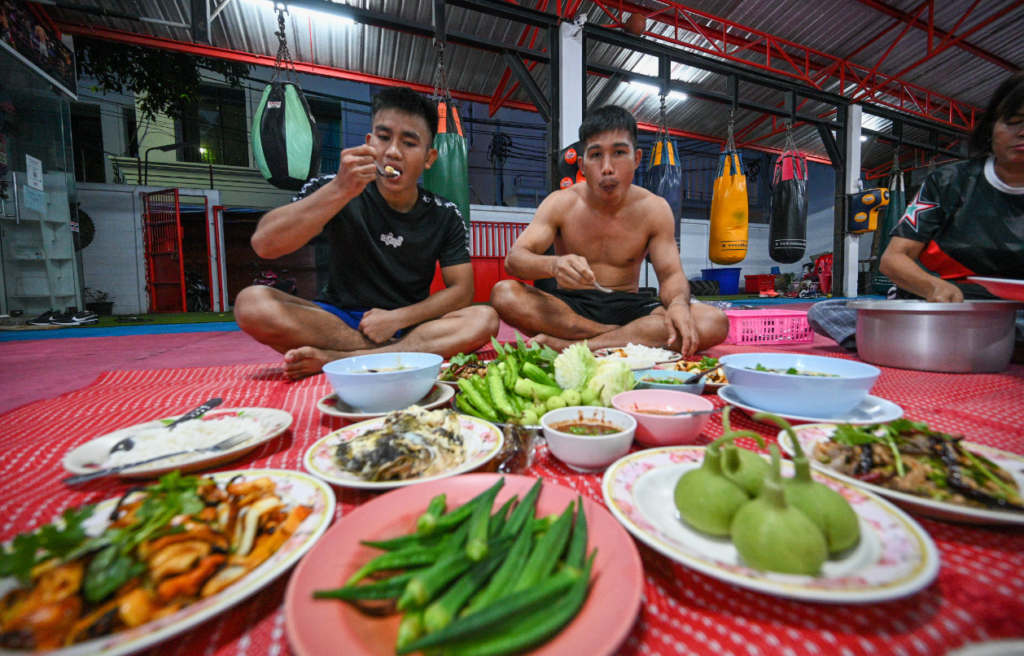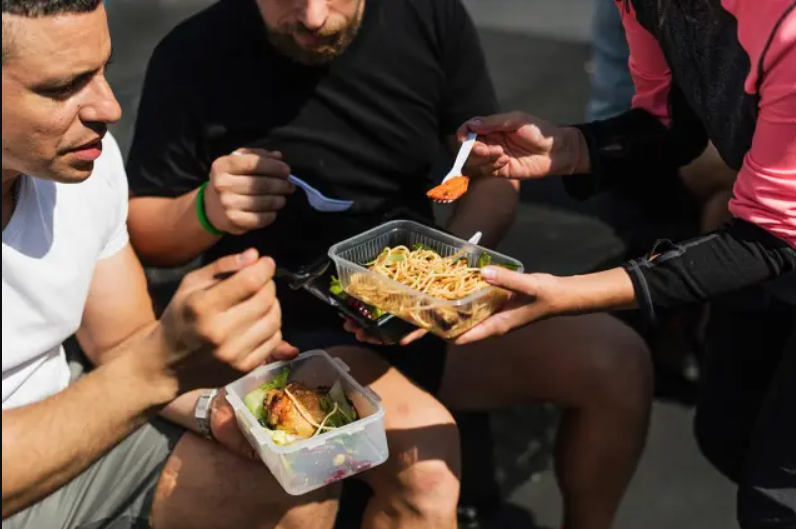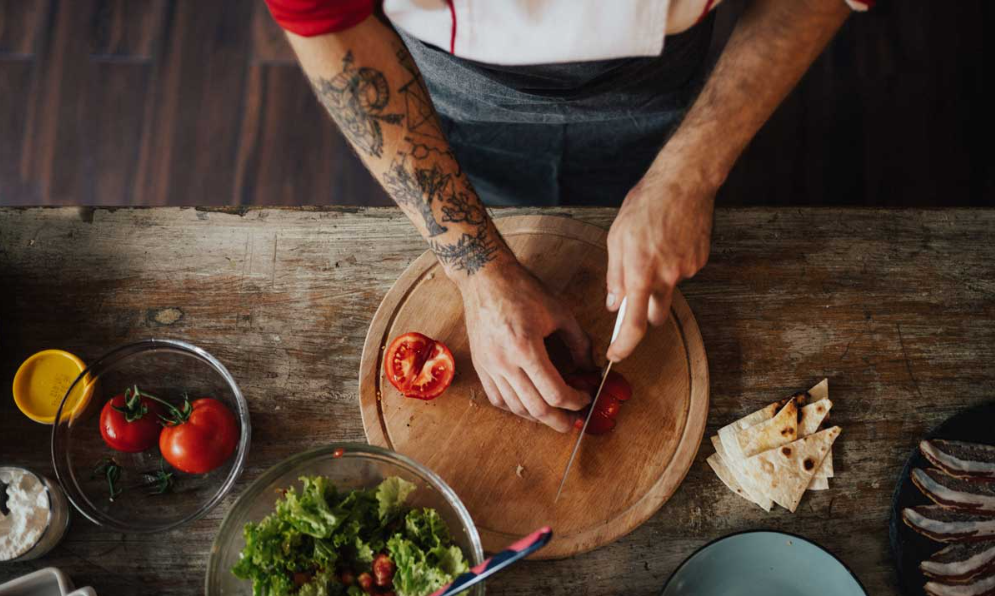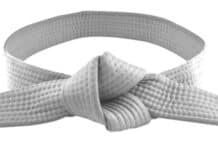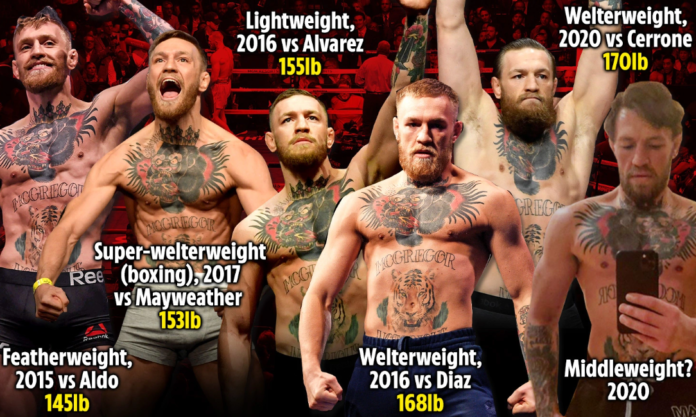
If you fight in MMA or BJJ, you understand how crucial it is to be the right weight for your match. You understand how hard and tense it can be to lose weight right before checking your weight. You want to become thinner without hurting your body, strength, or muscle. The fighter diet is there to help.
The Fighter diet is a healthy eating plan that includes foods like meat, eggs, yogurt, and vegetables. It has fewer calories and more protein and fiber. This program helps you lose weight quickly without losing your muscles. It also makes your body work better and reduces swelling. It can also boost how well you move and exercise.
After reading this article, you will know how to use our Fighter diet to lose weight fast and without any harm for your upcoming fight. You will learn how to keep your weight the same after the fight and start eating a healthy and balanced diet.
Okay, let’s begin!
What is A Fighter Diet?
A Fighter diet is a healthy eating plan that has foods with low calories, lots of protein, and fiber. It has lean meats, eggs, low-fat dairy, and vegetables that are not starchy. This approach is about eating less calories than you use up. If you eat less than your body needs, your body will use its fat stores for energy.
You can lose weight without losing muscles.
A Fighter diet also helps you enhance your satiety, which means feeling full and satisfied after eating. Consuming foods that have lots of protein and fiber can help you digest food slower and make sure your blood sugar stays stable for maximal performance and recovery results. This prevents hunger pangs and cravings that can sabotage your weight loss efforts.
Eating like a fighter before a fight also supports your recovery from weight training and sparring. When you eat good quality protein, your body gets the building blocks it needs to make new proteins. These building blocks are called essential amino acids. Protein synthesis is the process of repairing and building new muscle tissue.
Moreover, this type of diet reduces inflammation in your body by avoiding foods that can trigger it. Inflammation is when your body’s defense system responds to injury or infection.
Long-term inflammation can make your joints, muscles, and organs hurt, get bigger, turn red, and feel warm.
It can also impair your performance, recovery, and health.
The Fighter diet is different from other popular meal plans and diets such as keto, paleo, or intermittent fasting in several ways.
- The Keto diet is a way of eating that has very few carbohydrates, a lot of fat, and some protein. It makes your body go into a state called ketosis. Ketosis happens when your body uses fat to make energy instead of carbs. This is called “keto” and it can help you lose weight, control your hunger, and make your brain work better. But, it can also lead to problems like stinky breath, trouble going to the bathroom, headaches, feeling worn out, and not getting enough important nutrients.
- The Paleo diet is a way of eating like our ancient ancestors who lived a really long time ago. The Paleo diet is made up of foods you can hunt or catch, like meat and fish, and foods you can pick, like fruits, veggies, nuts, and seeds. The Paleo diet doesn’t allow foods that are made or grown with processing, like grains, beans, milk, sugar, and salt. It may help you lose weight, feel better after eating, and reduce swelling in your body. However, it can also be expensive, time-consuming, and difficult to follow due to its strict rules. It can also lack some important nutrients such as calcium, vitamin D, and fiber.
- Intermittent fasting is a pattern of eating that alternates between periods of fasting (not eating) and feeding (eating). There are different types of intermittent fasting such as:
- 16/8 (fasting for 16 hours and eating for 8 hours),
- 5:2 (eating normally for 5 days and restricting calories to 500-600 for 2 days), or
- alternate-day fasting (fasting every other day).
Intermittent fasting can help you lose weight, improve metabolism, and enhance cellular health. It can also interfere with your social life, work schedule, and training routine due to its irregular eating patterns.
As you can see, the Fighter diet has some advantages over other diet plans in terms of simplicity, flexibility, and effectiveness. It is not a fad diet that promises quick results but compromises your health. It is a sensible diet that helps you achieve your weight loss goals while supporting your performance and recovery.
What are the Best Foods for The Fighter Diet?
The best foods for a fighter diet support weight loss without sacrificing muscle mass and keep you full and satisfied for longer periods of time. They also aid in recovery from training and fighting.
Some examples of these foods include:
- Chicken breast: A lean source of protein with about 26 grams per 100-gram serving. It also contains B vitamins, iron, zinc, and selenium essential for energy production, immune function, and muscle repair.
- Turkey: Another lean protein source with about 29 grams per 100-gram serving.
- Salmon: A great source of protein with about 22 grams per 100-gram serving. This food has lots of omega-3 fats that can make your brain, heart, and joints healthier and reduce swelling in your body.
- Tuna: High in protein and omega-3 fatty acids with about 25 grams per 100-gram serving. However, be careful not to consume too much tuna as it can contain high levels of mercury.
- Eggs: One of the most complete sources of protein available providing all nine essential amino acids. They also contain choline which supports brain health and memory. Eggs also contain an abundance if healthy fats.
- Greek yogurt: A dairy product high in protein and low in fat with about 10 grams of protein per 100-gram serving. It also contains calcium, potassium, phosphorus, and probiotics that support bone health, muscle function, and digestive health.
- Spinach: A leafy green vegetable high in fiber and low in calories with about 3 grams of fiber per 100-gram serving.
- Broccoli: Broccoli is a healthy vegetable that is low in calories and has a lot of fiber. It has around 2.6 grams of fiber in a serving that weighs 100 grams. This thing has sulforaphane in it, which can help fight cancer, reduce swelling, and remove harmful things from your body.
- Cucumber: A refreshing vegetable high in water and low in calories with about 95% water per 100-gram serving. It also contains vitamins C and K, potassium, and silica that support skin health, hydration, and blood pressure.
- Red pepper: A colorful vegetable high in vitamin C and low in calories with about 127 mg of vitamin C per 100-gram serving. It also contains capsaicin which can boost metabolism, reduce appetite, and relieve pain.
- Asparagus: A spring vegetable high in protein and low in carbohydrates with about 2.2 grams of protein per 100-gram serving. It also contains asparagine which can help flush excess water and salt from your body.
- Zucchini: A summer squash high in water and low in calories with about 94% water per 100-gram serving.
- Extra virgin olive oil: Your go-to for salads and cooking.
Other foods with similar nutritional profiles that are good for a fighter diet include lean beef, whey protein, green tea, almonds, and oatmeal.
What are the Worst Foods for A Fighter?
Foods that are bad for fighters have a lot of calories, fat, carbs, sugar, salt, preservatives, and other things added to them. These foods can cause weight gain instead of loss and leave you feeling hungry and unsatisfied shortly after eating. They can also impair recovery from training and sparring.
Some examples of these foods include:
- Processed meats: Some meats like bacon, sausage, ham, salami, and hot dogs have a lot of calories, fat, salt, and harmful chemicals.
These things can make you more likely to be very overweight, have problems with your heart, have a stroke, or develop cancer. - Cheese (some types): Most commercial products are high in calories, fat, saturated fat, and cholesterol. It may cause bloating, gas, and constipation due to its lactose content.
- Butter: Quite high in calories, fat, saturated fat, and cholesterol. It can block blood vessels and make blood pressure and cholesterol levels go up. It may also cause weight gain due to its high-calorie density.
- Cream: A dairy product high in calories, fat, saturated fat, and cholesterol with similar effects as butter. It may also cause digestive issues due to its lactose content.
- Pasta: A boiled product high in carbohydrates, calories, gluten, and starch. It can have similar effects as bread and may cause water retention due to its starch content.
- Corn: A grain high in carbohydrates, calories, starch, and glycemic index. It can have similar effects as potatoes and may cause allergic reactions due to its zein content.
- Beans: A legume high in carbohydrates, calories, starch, and lectins. It can have similar effects as corn and may cause digestive issues due to its lectin content.
- Sweets: Candies, chocolates, cakes, pies, cookies, and ice creams have a lot of unhealthy stuff like calories, sugar, and fat added to them. Candy can make sugar levels, insulin levels, and fat storage go up. They may also cause dental problems due to their sugar content.
- Pastries: Some breakfast foods like croissants, muffins, donuts, and bagels have lots of calories, carbs, fat, and gluten. They can have similar effects as sweets and may cause bloating due to their yeast content.
- Alcohol: Beer, wine, spirits, cocktails, and the like have a lot of calories, carbs, and alcohol in them. They can impair liver function, dehydrate your body, and lower testosterone levels. Drinking lots of alcohol is a bad thing anyway without having to fight a trained opponent.
Results and Risks of The Fighter Diet
Following a Fighter diet correctly and consistently for two weeks can result in a loss of about 10-15 pounds of body weight. Most of this weight will come from water weight and body fat while preserving muscle mass and strength. Performance improvements such as increased speed, endurance, agility, and power may also be noticed along with increased energy levels and focus.
However, there are potential risks associated with a fighter diet, starting with dehydration.
Dehydration
This can occur due to excessive sweating during training or fighting or restricting water intake too much or too fast.
Taking diuretics or laxatives or drinking alcohol can also contribute to dehydration. Symptoms may include:
- Thirst
- Dry mouth
- Headache
- Dizziness
- Weakness
- Fatigue
- Confusion
Dehydration can occur due to several factors such as sweating excessively during training or fighting, restricting water intake too much or too fast, taking diuretics or laxatives, or drinking alcohol.
To prevent dehydration, you should drink plenty of water throughout the day and especially before and after training or fighting. You should also monitor your urine color and volume. If your urine is dark yellow or brown, or if you urinate less than usual, you may be dehydrated. If your urine is clear or pale yellow, and if you urinate frequently, you may be well hydrated.
Electrolyte Imbalance
Electrolyte imbalance happens when the levels of important minerals in your blood like sodium, potassium, calcium, magnesium, and chloride are either too high or too low.These minerals help your body control things like your nerves, muscles, fluid levels, blood pressure, and heartbeat.
Electrolyte imbalance can occur due to several factors such as sweating excessively during training or fighting, restricting water intake too much or too fast, taking diuretics or laxatives, or drinking alcohol.
To prevent electrolyte imbalance, you should drink plenty of water throughout the day and especially before and after training or fighting. Aim to eat foods rich in electrolytes like bananas, oranges, potatoes, tomatoes, spinach, yogurt, cheese, nuts, seeds, and salt.
Muscle Loss
Muscle loss is a condition where your body breaks down its own muscle tissue for energy. This can cause symptoms such as weakness, fatigue, soreness, and reduced performance.
Muscle loss can occur due to several factors such as creating a large calorie deficit, consuming insufficient protein, overtraining, or under-recovering.
To prevent muscle loss, you should create a moderate calorie deficit, consume enough protein, train appropriately, and recover properly. You should also supplement with whey protein, BCAAs, or creatine to support muscle synthesis, maintenance, and repair.
Metabolic Slowdown
This means that your body burns fewer calories at rest and during activity. This can cause symptoms such as weight loss plateau, hunger, cravings, and reduced performance.
It can occur due to several factors such as creating a large calorie deficit, consuming insufficient protein, overtraining, or under-recovering.
To prevent metabolic slowdown, you should create a moderate calorie deficit, consume enough protein, train appropriately, and recover properly. You should also cycle your calories, carbohydrates, or fat intake to keep your metabolism guessing and stimulated.
Hormonal Disruption
Hormonal disruption is a condition where your body’s production or regulation of hormones such as testosterone, estrogen, cortisol, insulin, and leptin is altered. These hormones regulate your mood, appetite, energy, reproduction, and metabolism.
it might occur due to several factors such as creating a large calorie deficit, consuming insufficient protein, overtraining, or under-recovering.
To prevent hormonal disruption, you should create a moderate calorie deficit, consume enough protein, train appropriately, and recover properly. You should also manage your stress levels, sleep well, and avoid exposure to toxins.
Rebound Weight Gain
Rebound weight gain is a condition where you regain the weight that you lost after ending your diet. This can happen due to several factors such as returning to your old eating habits overeating under-exercising or experiencing metabolic slowdown hormonal disruption or water retention
To prevent rebound weight gain you should transition gradually from a fighter diet to a more balanced and sustainable diet You should also monitor your weight and body composition regularly adjust your calorie intake and activity level according to your goals and progress rehydrate and refuel properly after workouts and maintain healthy eating habits
These are some of the potential risks of a fighter diet that you should be aware of and take precautions against. The Fighter diet is not meant to be followed for longer than two weeks or without medical supervision. It is also not suitable for everyone especially those who have medical conditions or special needs. If you have any doubts or concerns about the diet you should consult your doctor before starting it.
How to Cut Weight for a Fight with the Fighter Diet?
Cutting weight for a fight is a common practice among MMA fighters and boxers who compete in different weight classes. It means losing a lot of weight quickly, usually a day or two before weighing in.
The reason for weight cut is to have an advantage over the opponent in a fight. This is achieved by fighting in a lower weight category than your actual weight.
However, weight cutting is not easy or safe. It can harm your health, make you perform poorly, and disrupt your recovery process. Using this strategy can go wrong if you don’t do it correctly or if your opponent is better at it.
There are two main methods of cutting weight for a fight: water and carbohydrate manipulation. Both methods involve strategically adjusting your water and carbohydrate intake to manipulate your body weight.
Water Weight Manipulation
Water manipulation is essentially controlled dehydration. It is a method of cutting weight that involves reducing water intake and increasing water output to lose water weight. This can be achieved by:
- Restricting water intake
- Sweating through exercise or sauna use
- Taking diuretics such as caffeine, alcohol, or pills
While dehydration can help lose up to 10% of body weight in a short period of time, it can also have negative effects. These include impaired performance and recovery and potential health risks such as kidney failure, heart failure, stroke, or death.
To minimize the risks of dehydration, it is important to follow safe practices and guidelines.
- Dehydrate gradually: You should start reducing your water intake gradually several days before the weigh-in rather than abruptly on the day before or on the day of the weigh-in.
- Dehydrate moderately: You should aim to lose no more than 5% of your body weight through dehydration rather than 10% or more.
- Rehydrate properly: You should drink plenty of water and electrolytes after the weigh-in and before the fight to restore your hydration status and performance level.
You should also avoid drinking too much water too fast as this can cause water intoxication or hyponatremia.
Carbohydrate Manipulation
Carbohydrate manipulation is a method of cutting weight that involves manipulating your carbohydrate intake to manipulate your muscle glycogen stores and water retention. Glycogen is the stored form of carbohydrate in your muscles and liver.
There are different ways of carbohydrate manipulation such as:
- Carb depletion: This involves reducing your carbohydrate intake to less than 50 grams per day for several days before the weigh-in. This way, you deplete your glycogen stores and lose water weight along with it.
- Carb loading: This involves increasing your carbohydrate intake to more than 300 grams per day for several days before the weigh-in. This way, you replenish your glycogen stores and gain water weight along with it.
- Carb cycling: This involves alternating between low-carb and high-carb days for several days before the weigh-in. This way, you manipulate your glycogen stores and water retention without depleting or overloading them.
Changing the way you eat carbohydrates can make you lose 5% of your body weight quickly. although carbohydrate loading can be good, it can also be bad for you.
- Impaired performance: It might make you feel bloated, have gas, and cause problems with your digestion. This can affect your ability to move around comfortably and quickly.
It can also affect how your body manages sugar and insulin, which can impact how energetic and happy you feel. - Impaired recovery: Carbohydrate manipulation can lead to inflammation, oxidative stress, and immune suppression that can affect your muscle repair, glycogen replenishment, and electrolyte balance.
- Impaired health: Eating too many carbohydrates can cause health problems like trouble with insulin, diabetes, or a fatty liver over time.
These are some of the methods of cutting weight for a fight that you should be aware of and take precautions against. Cutting weight for a fight is not meant to be done frequently or without medical supervision.
Fight Week Diet Goals
Fight week diet is a special diet that you follow during the last week before your fight. It is different from your regular fighter diet because it has some specific goals and strategies that are designed to help you make weight and optimize your performance on fight day.
The main goals of fight week diet are:
- To lose any remaining excess body weight that you need to drop to make your weight class.
- To maintain or increase your muscle mass and strength.
- To prevent or minimize dehydration and electrolyte imbalance.
- To avoid or reduce inflammation and oxidative stress.
- To enhance your energy levels and mood.
The main strategies of fight week diet are:
- To manipulate your water and carbohydrate intake to manipulate your body weight.
- To consume high-quality, lean protein, fiber-rich vegetables, and moderate amounts of fat.
- To add important nutrients like vitamins, minerals, antioxidants, and electrolytes to your diet.
There are different methods of manipulating your water and carbohydrate intake to manipulate your body weight such as:
- Dehydration: This involves reducing your water intake and increasing your water output through sweating or taking diuretics. This can help you lose water weight quickly but it can also impair your performance, recovery, and health.
- Carbohydrate loading: This involves increasing your carbohydrate intake to replenish your glycogen stores and gain water weight along with it. This can help you increase your energy levels and performance but it can also cause bloating, gas, nd digestive issues.
- Carb cycling: This involves alternating between low-carb and high-carb days to manipulate your glycogen stores and water retention without depleting or overloading them. This can help you balance your energy levels and performance without causing too much discomfort or risk.
The Best Supplements for MMA and BJJ Fighters Cutting Weight
MMA and BJJ are two of the most demanding combat sports that require high levels of stamina, strength, power, endurance, and skill. Fighters often need to cut weight before a fight to make a certain weight class, which can be challenging and stressful for the body and mind. That’s why supplements can be very helpful for MMA and BJJ fighters who want to optimize their performance, recovery, and health.
Here are some of the best supplements for MMA and BJJ fighters cutting weight:
Pre-workout
A pre-workout supplement can give you a boost of energy, focus, and motivation before a training session or a fight. Some of the ingredients usually found in a pre-workout supplement are caffeine, beta-alanine, citrulline malate, creatine, and BCAAs.
Protein
Protein is the building block for muscle growth, repair, and recovery. It also helps you maintain your lean muscle mass while cutting weight, which can prevent muscle loss and metabolic slowdown. Protein can also keep you full and satisfied, which can help you control your appetite and cravings. Some of the best sources are protein powders like whey, casein, egg, soy, pea, and hemp. A protein shake is usually the best way to implement supplemental protein into your Fighter diet.
Omega-3
Omega-3 fats are good for your brain, heart, joints, skin, and immune system. They can also reduce inflammation, which can help you recover faster from training and injuries. Omega-3 fatty acids can also improve your mood and cognitive function, which can help you cope with stress and anxiety before a fight. Top sources include fish oil, krill oil, flaxseed oil, chia seeds, coconut oil, and walnuts.
Fat Burner
A fat burner supplement can help you burn more calories and fat while cutting weight. It can also suppress your appetite, boost your metabolism, and increase your energy levels. Some of the ingredients to look for in a fat burner supplement are green tea extract, caffeine, capsaicin, forskolin, and L-carnitine.
These are some of the best supplements for MMA and BJJ fighters cutting weight. They can help you achieve your weight goals while enhancing your performance, recovery, and health. However, remember that supplements are not magic pills that can replace a balanced diet, a proper training program, and a healthy lifestyle.
How to Use The Fighter Diet to Lose Weight (Sample Menu)
To follow a fighter diet successfully, you need to have a clear plan that outlines what to eat, when to eat, how much to eat, and how to prepare your food.
Here is a sample 2-week meal plan for a fighter diet that you can use as a guide:
| Day | Breakfast | Lunch | Snack | Dinner | Calories | Protein | Carbohydrates | Fat |
| Monday | Oatmeal with Banana and Almonds | Turkey and Cheese Wrap with Baby Carrots | Apple with Peanut Butter | Baked Salmon with Asparagus and Quinoa | 1500 kcal | 150 g (40%) | 150 g (40%) | 33 g (20%) |
| Tuesday | Veggie Omelette | Grilled Chicken Salad with Balsamic Vinaigrette | Greek Yogurt with Berries | Beef and Broccoli Stir-Fry with Brown Rice | 1600 kcal | 160 g (40%) | 160 g (40%) | 36 g (20%) |
| Wednesday | Protein Smoothie (1 scoop protein powder, 1 banana, 1 cup almond milk) | Tuna Salad Lettuce Wraps with Baby Carrots | String Cheese with Grapes | Turkey Meatballs with Zucchini Noodles | 1400 kcal | 140 g (40%) | 140 g (40%) | 31 g (20%) |
| Thursday | Cottage Cheese with Pineapple | Turkey and Cheese Roll-Ups with Bell Peppers | Hard-Boiled Egg | Grilled Chicken with Sweet Potato and Broccoli | 1700 kcal | 170 g (40%) | 170 g (40%) | 39 g (20%) |
| Friday | Avocado Toast with Tomato and Egg | Chicken and Vegetable Stir-Fry with Brown Rice | Protein Bar | Baked Cod with Green Beans and Quinoa | 1500 kcal | 150 g (40%) | 150 g (40%) | 33 g (20%) |
| Saturday | Greek Yogurt Parfait with Granola and Strawberries | Chicken and Avocado Sandwich with Baby Carrots | Protein Bar | Shrimp and Vegetable Stir-Fry with Brown Rice | 1600 kcal | 160 g (40%) | 160 g (40%) | 36 g (20%) |
| Sunday | Egg Muffins with Orange | Roast Beef Salad with Sunflower Seeds and Ranch Dressing | Cheese and Crackers | Roasted Chicken and Vegetables with Brussels Sprouts, Carrots, and Potatoes | 1700 kcal | 170 g (40%) | 170 g (40%) | 39 g (20%) |
By following this healthy meal plan for a week, you’ll get a balanced diet with all the essential nutrients your body needs.
As you can see, the meals in this plan provide you with enough calories, protein, carbs, and fat to fuel your training, recovery, and weight loss.
It also includes a variety of healthy foods that are rich in vitamins, minerals, antioxidants, and phytochemicals that support your health, immunity, and well-being.
You can adjust the portion sizes, food choices, or meal timings according to your preferences, schedule, or goals. However, try to stick to the general principles of a fighter diet as much as possible.
Conclusion
The Fighter diet is a two-week diet plan that can help you lose 10-15 pounds of body weight in order to make weight for a fight. It involves eating high-quality, lean protein, fiber-rich vegetables, and moderate amounts of fat while restricting water and carbohydrate intake.
A Fighter diet can improve your performance by increasing your strength, speed, power, and reach over your opponent. It can also make you feel more energetic, focused, and confident.
However, the Fighter diet is not without risks. It can impair your performance by reducing your endurance, agility, and coordination. It can also impair your recovery by affecting your muscle repair, glycogen replenishment, and electrolyte balance.
To minimize the risks of a Fighter diet, you should dehydrate and carbohydrate load gradually and moderately. You should also rehydrate and refuel properly after the weigh-in and before the fight.
You should also consult your doctor before starting a Fighter diet if you have any medical conditions or special needs.
The Fighter diet is not meant to be followed for longer than two weeks or without medical supervision. It is also not suitable for everyone especially those who are not competing in a fight. It is a temporary way to lose weight that will spare as much muscle as possible. It is not a lifestyle or a sustainable way to eat.
I wish you all the best in your weight loss journey and your fight!










